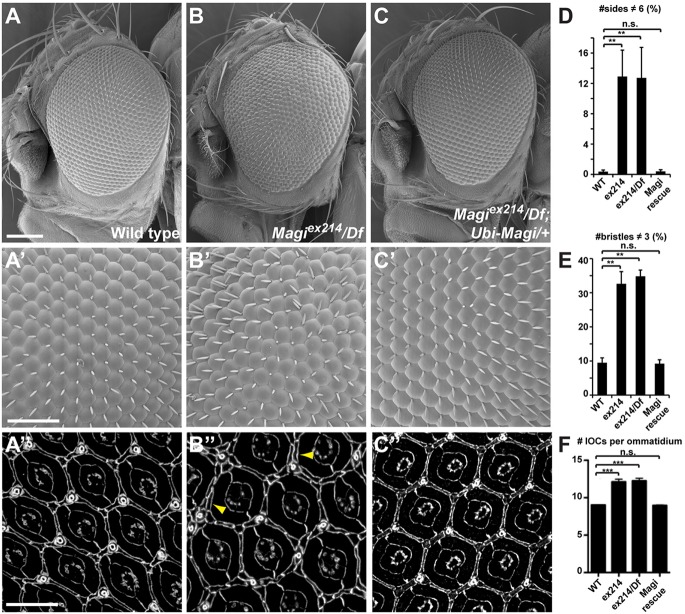Fig. 1.
Magi controls morphogenesis of the Drosophila pupal eye lattice. (A-C) Scanning electron micrographs showing the effect of Magi mutation on the external architecture of the adult eye. Magi mutant adults have a mild rough eye phenotype (B) compared with wild type (A), which is rescued by providing a ubiquitously expressed Magi transgene (C). (A′-C′) High magnification of the adult compound eye corresponding to A-C. The regular hexagonal packing of ommatidial units of the wild type (A′) is affected in Magi mutants (B′) and rescued by providing wild-type Magi (C′). (A″-C″) Pupal eye at 44 h APF stained for E-Cad, showing the ommatidial organization corresponding to A-C. Magi mutant eyes have extra IOCs (B″, arrowheads) compared with wild-type controls (A″). Total rescue is seen when a wild-type Magi transgene is provided (C″). (D,E) Quantification of the effects observed in A′-C′. The total number of ommatidia scored ranged from 433 to 541 depending on genotype. (F) Quantification of the number of IOCs per ommatidium (see Materials and Methods). (D-F) Error bars indicate s.e.m.; ***P<0.001, **P<0.01, n.s., not significant (unpaired t-test). Scale bars: 100 µm in A; 50 µm in A′; 10 µm in A″.

